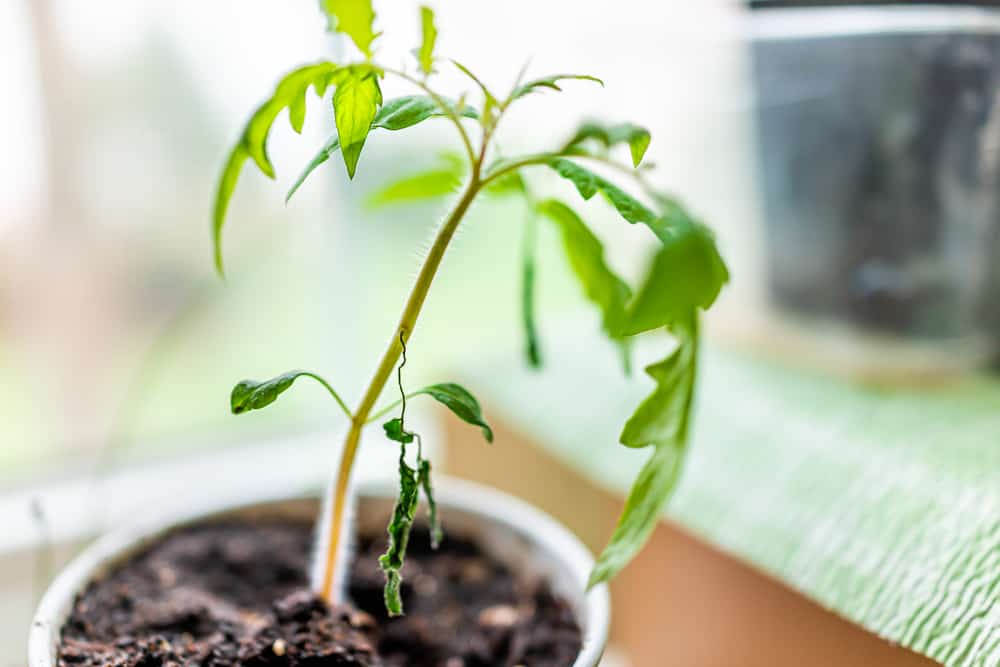Yes, you can overwater tomato seeds. This is because tomato seeds need a lot of water to germinate and grow. If you overwater them, the seeds will rot and the plant will not be able to grow.
- Place tomato seeds in a bowl of warm water and let them soak for 24 hours
- Drain the seeds and place them on a moistened paper towel
- Fold the paper towel over the seeds, place it in a plastic bag, and seal the bag
- Place the bag in a warm (70-80 degrees Fahrenheit), dark location for 3-5 days, or until the seeds have germinated
- Once the seeds have germinated, plant them in individual pots filled with potting soil
EASY Watering Trick for Amazing Tomato Harvests
Do Tomato Seeds Need a Lot of Water?
No, tomato seeds do not need a lot of water. In fact, too much water can be detrimental to their growth. Tomato seeds should be planted in well-draining soil and only watered when the top inch of soil is dry.
Can You Overwater Tomato Seedlings?
Yes, it is possible to overwater tomato seedlings. If the soil is constantly wet, it can lead to problems such as root rot and fungal diseases. The best way to water tomato seedlings is to allow the top inch of soil to dry out between watering.
How Often Should I Water Tomato Seeds?
You should water tomato seeds every day, or as often as possible. Watering them once a week is not enough.
How Often Should I Water Tomato Seeds for Germination?
It is generally recommended that you water tomato seeds for germination about once a day. However, you may need to water more frequently if the soil is dry or if the temperature is high. Once the seedlings have emerged, you can reduce watering to every other day or so.

When to Stop Watering Tomatoes?
When to Stop Watering Tomatoes? The time has come to say goodbye to your green friend. Yes, it is time to stop watering your tomatoes.
Depending on the type of tomato plant, it could be anywhere from late September to early November. Here are some tips on when to stop watering your tomatoes:
- If you have an indeterminate type of tomato plant, it will continue growing and producing fruit until the first frost hits. At that point, you can stop watering your plant.
- Determinate types of tomato plants will stop growing once they reach a certain height (usually around 4-5 feet). Once they stop growing, you can cut back on the amount of water you give them.
- As the weather starts to cool down in fall, the leaves on your tomato plant will start to turn yellow and drop off. This is called leaf drop and is a normal part of the plant’s life cycle. Once this happens, you can reduce the amount of water you give your plant even further.
- Once all the leaves have fallen off or been picked off, you can completely stop watering your tomato plant. If there are still any green tomatoes left on the vine at this point, they will most likely not ripen before frost sets in so you can go ahead and pick them off as well. So there you have it!
A few simple tips on when to stop watering your tomatoes for the season.
Early Stage Over Watered Tomato Plant
If you’ve ever grown tomatoes, you know that they need quite a bit of water. But did you know that it’s possible to overwater your tomato plants? Overwatering can lead to a number of problems, including blossom end rot, fruit cracking, and leaf spot.
So how do you know if you’re overwatering your tomatoes? There are a few telltale signs. The first is wilting leaves.
If the leaves of your tomato plant are wilting, it’s likely because they’re not getting enough water. This could be due to insufficient watering or too much evaporation from the soil. Another sign of overwatering is yellowing leaves.
This is usually caused by root rot, which can happen when the roots of the plant are constantly wet. Root rot will eventually kill the plant if it’s not addressed. If you think you might be overwatering your tomatoes, there are a few things you can do to fix the problem.
First, make sure you’re only watering when the soil is dry. Second, consider using mulch to help retain moisture in the soil.
Overwatering Tomatoes in Pots
If you’ve ever grown tomatoes in pots, you know that they can be a little tricky. It’s easy to overwater them, and when you do, the results can be disastrous. Overwatering can lead to a number of problems, including yellow leaves, blossom end rot, and even root rot.
Yellow leaves are one of the first signs that your tomato plant is getting too much water. The leaves will turn yellow and fall off, and the plant will start to look stunted. Blossom end rot is another common symptom of overwatering.
This is when the bottom of the tomato fruit starts to Rot and turn black. Finally, root rot can occur if the roots of the plant are sitting in water for too long. This will kill the plant eventually.
So how do you avoid overwatering your tomatoes? The best way is to feel the soil before you water it. If it’s still damp from the last watering, hold off until it starts to dry out.
Also make sure you have a drainage hole in the bottom of your pot so that excess water can drain out. With a little care, you can grow healthy tomatoes in pots without any problems!
Conclusion
Yes, it is possible to overwater tomato seeds. When the seeds are over-watered, they can become waterlogged and suffocate. This will cause the seedlings to die before they have a chance to germinate.
If you think you have overwatered your tomato seeds, try removing them from the soil and allowing them to air dry for a few days.
